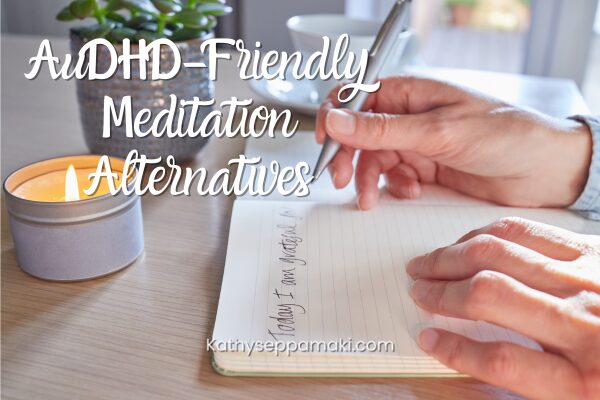For decades, I have been hearing about the benefits of meditation. And I’ve tried to meditate. But I have always struggled to sit still and focus. Because of that, meditating has always been a huge struggle for me. For the longest time, I didn’t understand why I struggled to meditate. But now that I know that my brain works a bit differently than others, I wanted to see if there is an AuDHD-friendly way to meditate that CAN work for me!
Do you have similar struggles with meditation? Here are some options!
Since conventional meditation isn’t working for you, you might find that movement-based or sensory-rich meditations work better with how your brain functions. Here are some alternatives that can help you achieve mindfulness without sitting still:
Movement-based meditation
-
Walking meditation – Take a slow, mindful walk in nature or even around your home, focusing on each step and your breath.
-
Yoga or Qigong – These involve gentle, intentional movements that keep your body engaged while quieting your mind.
-
Ecstatic dance – Put on music and move intuitively. Let your body lead while staying present with the sensations.
-
Chores as meditation – Wash dishes, sweep, or fold laundry mindfully, paying attention to sensations and movements.
Sensory meditation
-
Using sound to meditate – Listen to nature sounds, binaural beats, or calming music. Let your focus drift between different tones.
-
Tactile meditation – Hold a smooth stone, run your fingers through sand, or use a weighted blanket to ground yourself.
-
Aromatherapy meditation – Use essential oils like lavender, sandalwood, or citrus while focusing on the scent and breath.
Active mindfulness practices
-
Journaling meditation – Free-write your thoughts as they come, without judgment. This can help clear mental clutter.
-
Guided visualizations – Listen to recorded guided meditations that lead you through an imaginative journey.
-
Breath work and fidget – Use a fidget toy while practicing deep breathing (inhale 4 counts, hold 4, exhale 4).
One of the ways you can start to thrive is to stop trying to fit into the world and the conventional ways that have been used to reduce stress, and practice meditation in the past. You were built to do things differently. And when you find out what does work for you, you are on your way to a life in which you truly can thrive!




